Anatomy of an Era: Professor Ken Dewey, Part 2
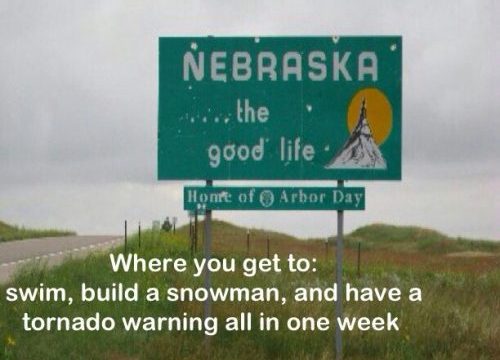
Excerpted from Chapter 89, No Place Like Nebraska: Anatomy of an Era, Vol. 2 by Paul Koch
Anatomy of an Era: Professor Ken Dewey, Part 2
Q: Let me ask you, when it comes to thunderstorms, I believe you once said that there’s more energy in one thunderstorm than all the exploded bombs of World War II combined…
KD: Well, I don’t know what the exact quote is, but the energy inside an individual thunderstorm does exceed that of an atomic bomb, so there’s a tremendous amount of energy inside there.
Just the very fact that it can take a softball-sized hailstone and toss it ten miles up into the air -and as I used to tell your meteorology class- a jet aircraft at cruising altitude is at 32,000 feet, and that’s only at halfway to the top of a thunderstorm….and that jet really has to work to stay up there at 32,000 feet and it takes a lot of fuel to keep going, but a hailstone is tossed up twice that height inside a thunderstorm. It shows you the amazing amount of energy that’s in there.
Q: Most of that energy is updraft, correct?
KD: Yes.
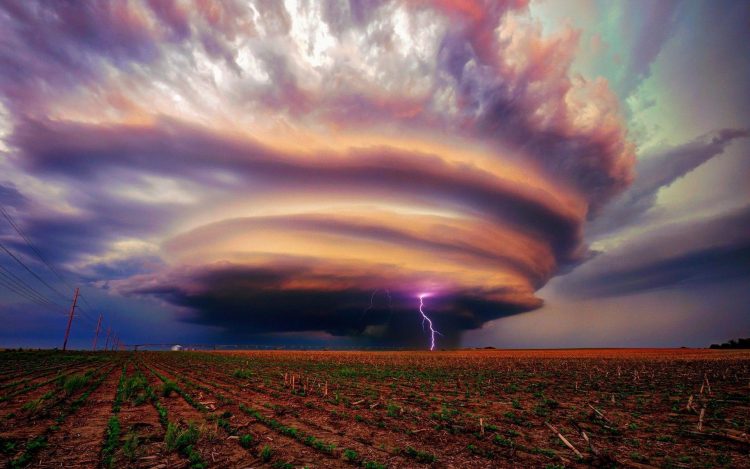
Q: So the hail goes upward and finally accumulates some extra moisture in the cold air at the top…
KD: They go up and then drop back down and go up again and drop back down. And every time it comes down it gets a new layer of ‘wet’, and when it goes back up it freezes back on there again, so it grows more and more layers on it and grows in size relative to the thunderstorm’s strength.
Q: So after a while it becomes so heavy that it has to drop down to terra firma, right?
KD: Yeah, there’s a number with it. I don’t know what that is, but it eventually hits the edge of the updraft and it just falls out. It would be like somebody jumping on a trampoline and eventually they get up too high that they jump off to the side of it and fall off the trampoline.
Q: Wow! So how do you think the weather defines the personality of Nebraskans? Have you ever given that much thought?
KD: Yes, I have thought about that a lot. When I first came here I ran across an article that talked about longevity, and the people who lived the longest in America are in North Dakota, and Nebraska is ranked right up there in the top ten along with Wyoming and Montana and South Dakota. I used to tell students that the largest cause of death in Nebraska is boredom. (laughs) Some ninety-six year old guy rolls over and says, (sigh) “Not one more day. I’ve had it. I’m checking out.” (laughs)

But the part of the Nebraska resiliency is that in sports you don’t become good with complacency, you become good with hard, continued practice, maintaining stress: physical stress. When you were training people over there in the weight room they weren’t just lifting the minimal amount for five minutes. You tried to push their limits, right? And what the weather does during the year, there are so many extremes that it makes a person stronger. One of the reasons why the early pioneers who came here and survived -they lived through dust bowls, they lived through heat waves, they lived through blizzards- it made them stronger. So a lack of weather contrast does not make you stronger, weather contrast stresses you and makes you stronger. And it’s the same thing in athletics: you become stronger the more you keep pushing yourself.
In a place like Florida or Hawaii the people don’t have the weather contrast. It’s ironic, but the states with the nicest weather have some of the highest, earliest average mortality ages. And in football, in sports, you don’t get to be number one unless you push hard in your training and exercising and all of that. It seems like the states with the most extreme weather, it certainly pushes us to the limits of endurance and we live the longest.
Q: Whether it be surviving or thriving in that weather, you feel it makes a difference, then?
KD: I don’t know. I don’t know, but somehow in athletics, in football, you’re going to push yourself to the limit of endurance. And the weather in Nebraska, it certainly could be described in Nebraska as pushing us to the limits of endurance, and we live the longest. In athletics you’re going to push yourself to the limits of endurance, and the weather in Nebraska does the same.
Q: I liken it to combat, in the fact that we as human beings are always warring against something that creation keeps throwing at us…
KD: Of course. We are right in the middle, battling these things…
Q: It’s like we are in the middle of a circle of attackers, surrounded and facing off all these ‘elemental bullies’ taking their turns at assaulting us. You have the attack of heat, the attack of cold, the attack of wind, the attack of humidity, the attack of lightning, tornadoes, hailstorms, et cetera.
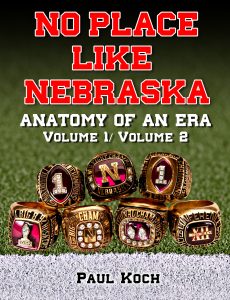
Available on Amazon.com
KD: Unfortunately, the residents of Nebraska are the ones stuck with the collateral damage from all of this. We are the ones who always have to deal with it. We are probably the only state where there are two main topics and not much else left to talk about. We even decided to have a unicameral legislature, so we don’t even really talk about politics. That’s pretty unique. It’s either sports or weather and not much of anything else.
Q: So there is a unity by cosmic design, do you think?
KD: By design. And Paul Fell, the cartoonist for the Journal-Star, he said that in Nebraska the Interstate highway rest areas should have signs that say, “Stop here. Weather stories are told.” He was a great believer that weather made people in Nebraska very humorous when it came to sports and the weather.
Q: So I have to ask: Do you have a favorite weather story?
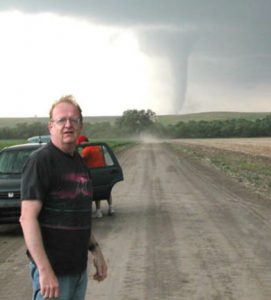
KD: For me, I’d actually watch the weather at the football games. I was impressed when I was recently at a game and I saw that they took into account that the front was going to pass at halftime, so they could figure out a way to keep the wind at their back for three of the four quarters. I was really impressed with that, because normally if the wind was from the south the entire time you only get two quarters with the wind at your back and two quarters with the wind in your face. They put the wind behind themselves three times by looking at the forecast and knowing that the wind was going to shift.
And then, watching the sunsets and the rainbows. I remember one time watching the wind blow all the debris from the stands down into the stadium as a front came through in November, and blowing all the debris down into the stadium and swirling around into a little dust devil. And people around me couldn’t understand how I could be so excited, because this was the best of both worlds: I’m here at a Nebraska football game and watching a dust vortex down there on the stadium floor.
Q: That’s funny. As a student I remember corn husks once raining down from a blue sky into Memorial Stadium during a game…
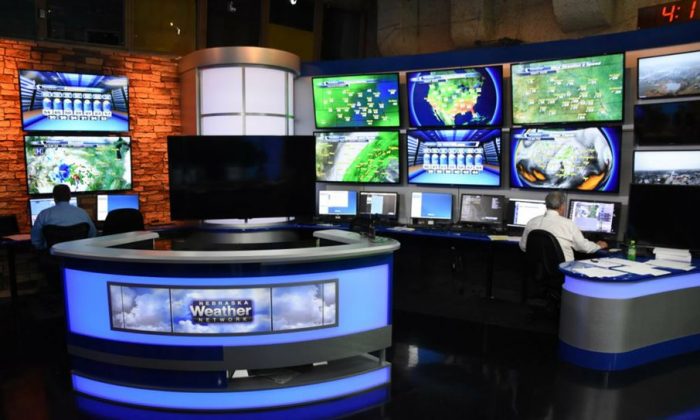
KD: Sure. They had been ripped right out of the fields and then deposited there.
And it was funny to watch the ignorance. I remember watching the Cal game a good ten years ago or so, and I remember the TV announcer saying, “It’s September 8th and they must have already had a deep freeze here because all the corn is already dead.” He didn’t understand that the corn was done by September and it goes brown naturally. And the day was in the 80’s. I was like, ‘No.’ (laughs)
Q: So you said you’re something of a part-time football fan. Does any particular game of note stand out to you?
KD: This isn’t my most memorable moment, but I remember one time when Jesse Kosch -who was the punter- he was a meteorology major. And I’ll never forget the look on my wife’s face when he was on the big screen and was flat out on the turf, unconscious, because he got run over. But he was fine. He got up and shook it off. And I said, ‘Great! My one and only meteorology major, and they kill him.’ (laughs)
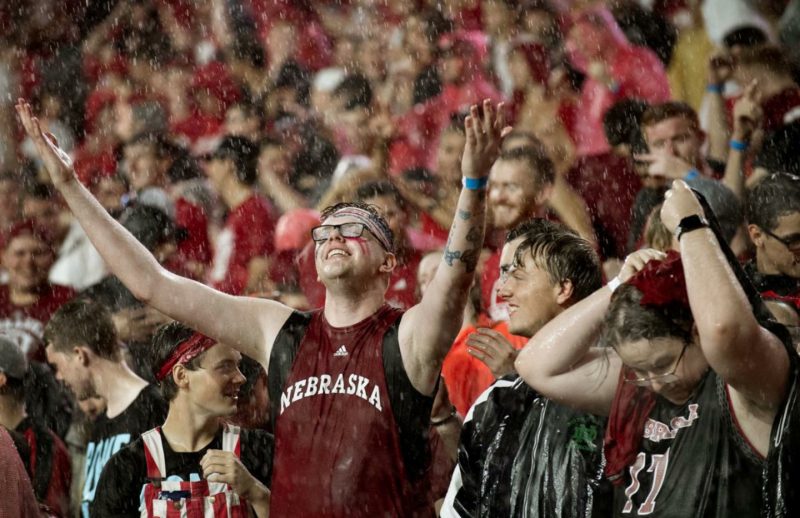
For me it was the very early years and watching how people wouldn’t leave the stadium. That was always amazing to me. And I didn’t get that at first -dealing with the crowds in Chicago- I would get up with about 5 minutes left in the game to leave early and get a good start in traffic. But I remember starting to walk out of the stadium and we were ahead -and we were playing Alabama- and all of a sudden Alabama in three plays went all the way down the field and went ahead with a minute and thirty seconds left. And I remember, white-knuckled, holding onto the railing (probably blocking the view of somebody) going, ‘This is pretty epic stuff here.’ And Nebraska went right back down the field and won. And I remember thinking, ‘This is a whole different feeling here.’
And I remember on days I wouldn’t go to the game and I’d be driving in downtown Lincoln, and it was totally quiet. Then you’d hear the roar of the crowd coming from the stadium, it was always impressive to me. There are a lot of memories like that.
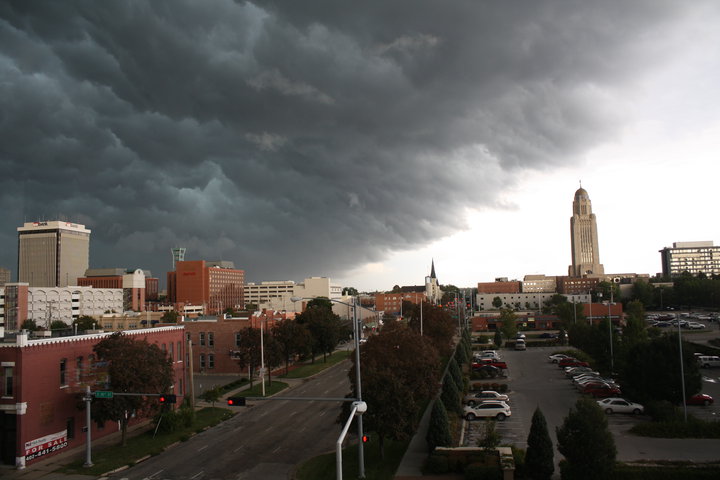
I remember the game back in the mid-nineties that both of my sons went to: Nebraska won. It was the last game of the season and we beat either Oklahoma or Colorado in a thirty-three degree rain. It was the most miserable Nebraska football game ever and, of course, nobody leaves the games.
And when I was a consultant for Larry the Cable Guy their big worry was, “What if it’s cold or what if the weather’s not nice?” I said, ‘The people sit out here when it’s below zero.’ And Larry Levinson the producer said, “No, seriously, Ken. I have a lot of money invested in this and I need a straight answer from you.” And I said, ‘No, they sit out there when the wind chill’s below zero, and I’ve been to games when it’s snowing and the weather is in its teens and twenties.’ And Larry goes, “Ken, lookit, I know you’re a great guy and you’re real funny, but let’s get serious here.” And Butch Hug is there in the background just laughing, and he says, “Larry, he’s not kidding.” So I said, ‘And Larry, the best part is, they don’t leave the game.’
So in that game playing Colorado -it might have been- it was thirty-three, thirty-four degrees, steady rain. Both of our sons were so excited about that game (and they were going to call us to come and get them afterwards), but they walked all the way out to our house. We didn’t know where they were, and an hour and a half later they arrive at the door totally soaked, beet-red, looking like they had a horrible sunburn, because they were out in the cold. And I said, ‘How are you guys?’ And they said, (shivering in excitement) “What a game! What a GAME!” I looked at the two of them and said, ‘Wow, Nebraska fans…’ They’d sit out there in the game and then re-live the game again with each other walking home. So it amazes me when I look at games on TV, when people leave when the weather is bad. And even when we’re ahead, Nebraska fans stay until the end. It still amazes me.
There was one game where I remember taking a look around us -and the score was like 44 to 3- and nobody was leaving. Then later in the game it was like 64 to 3, and still nobody was leaving. And then finally with about two or three minutes left in the game you could actually see some of the older people getting up and leaving, the ones who needed a little more help. You flip around the TV on a Saturday and you’ll see a stadium half empty because it’s raining and 55 degrees, but not at Nebraska. They take it very seriously here. I felt like it was the perfect place to come, because they take their weather seriously here and they take their football seriously here.
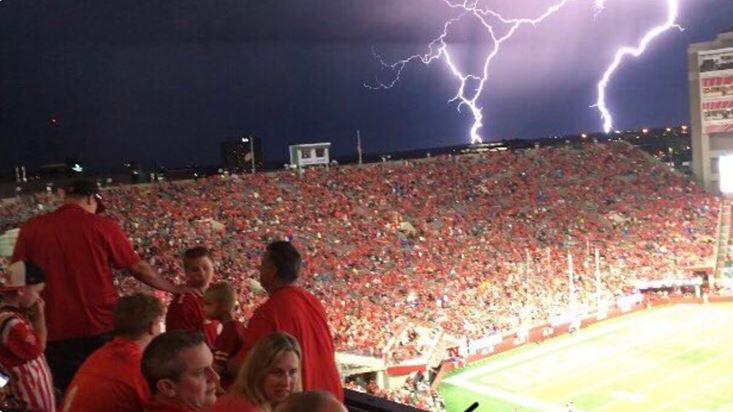
Q: Have you ever witnessed a prevalence of lightning at Memorial Stadium? Is the structure in any way, shape or form a lightning rod?
KD: It’s very dangerous. Live on ABC TV about a decade ago, lightning struck Oldfather Hall, the tall building right nearby. There was this huge crack and then Slam!Bam!, it echoed throughout the entire stadium. And, of course, what they did at that point, they made sure that both teams were put away in safe keeping -and the fans had come down to the stadium floor and were doing belly-slides in the rain on the turf. And the most amazing photograph of all were the people with their wet hands on the wet railing at the very top of the east side of the stadium, holding onto the rail in the middle of this lighting. They were holding onto the lightning rod. And it’s, of course, a nightmare, because we don’t have a plan for what to do with 85,000 people. We can’t suddenly take them and get them out of the stadium. We can tell the ones who are up and exposed to get down underneath, but people are still going to do what they want to do. But that was a close call.
I have a picture of a Clemson football game that I use for educational purposes, and it shows the teams down on the twenty yard line on one end of the field and it shows a lighting bolt hitting the field on the other twenty yard line. Very, very, very scary.
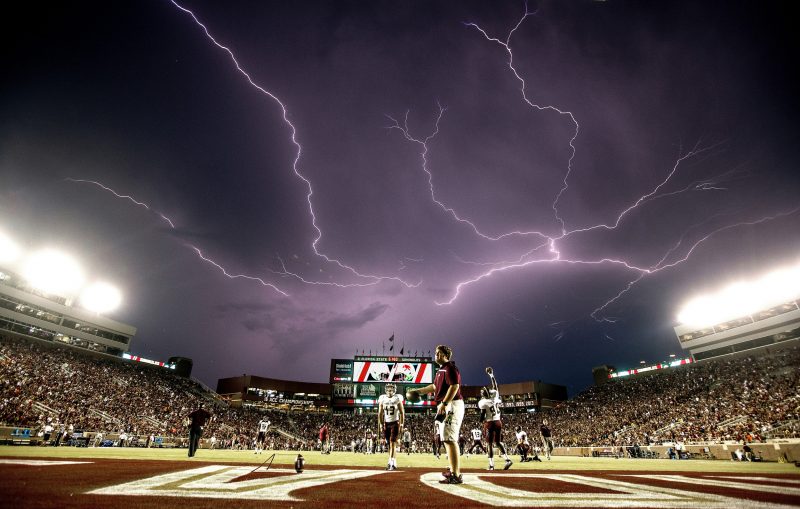
(AP Photo/Mark Wallheiser, File)
Q: So let’s say, for posterity, there’s a Husker fan reading this, and instead of a touchdown making the hair stand up, instead it’s a prospective lightning strike making the hair stand up on the back of your neck. What should you do in that situation?
KD: Well, duck and cover. And don’t hold onto anything metal, for sure. And there’d be a panic, too, if we told people to run for safety. So you certainly wouldn’t like to have panic in the stadium. But it still would amaze me the number of people who would stand up on the upper east end and lean on a railing without thinking. Two years ago we were down in Kansas storm-chasing with some of my colleagues when lightning struck the power lines immediately over our heads. All of a sudden the power lines over our heads became very buzzing, and you could see something was going on, and right next to us the whole power line fell down, just missing us.
And I remember a sad occasion, too, playing Oklahoma in the 80’s when they used to throw oranges on the field for the Orange Bowl, and they struck a cop down on the field and paralyzed him.
Q: I don’t remember that…
KD: Campus police was down there, and somebody hit him right in the brain stem and he was paralyzed for life. There are dangers down there in the stadium. That’s why they don’t allow fruit in there anymore. They were throwing frozen oranges, because it was freezing.
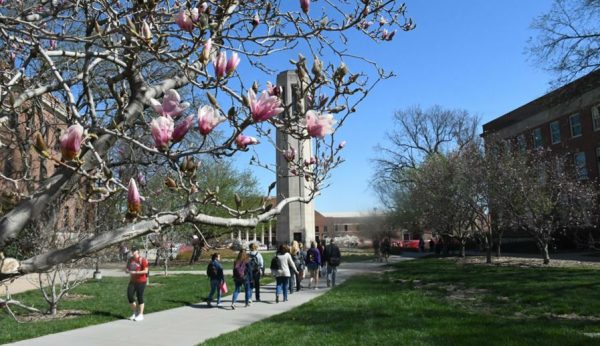
Q: What about the geography of Nebraska? Any special interplay to note?
KD: Well, just again, we’re in the middle of everything. It’s amazing to me that a state that’s over 450 miles wide from one end to the other: it’s Husker Nation. It truly is a Husker Nation. And being in the middle of it all, we get Pacific moisture coming in from the Pacific Northwest, we have dying tropical hurricanes down in Baja California -that stuff can come up through Arizona into our area- we have Gulf moisture coming up from dying hurricanes, we’ve got arctic air and polar air that comes down here, we’ve got mountain conditions -which are called mountain winds and Chinooks- coming down to our area. So that’s what I mean when I say we are absolutely in the middle.
Looking back over my career, I can’t think of a better state to have spent my career -though I did work for two years in Washington, D.C- and I can’t think of a better football program to have been associated with. And as I’ve said, “In academia there’s a football program here that even academics can be proud of. And there’s an academic program that even a football program can be proud of.” That’s why we usually lead our conference in Academic All-Americans. So the school is now not only for high class football teams, but a high class academic program. So I came to probably the ideal environment. And I‘m not a sports nut, but I can appreciate a state who has a high class sporting program and the best, exciting weather in all the fifty states.
Q: Your title is Professor of Applied Climate Sciences, right?
KD: Right. And if you ever have the chance, I have some wonderful photos of football games and weather on my website. It’s called Nebraskaweatherphotos.org, and when you get there you click on, “And more”, because when I get to a football game I take photos of the game, of the sunsets, of the weather. It has a huge following. People who love football probably love weather. That’s why I created the website.
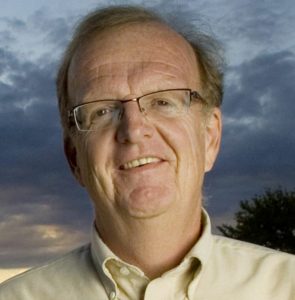
And you know what, I called my wife one day back in ‘95 and I told her I was just the tenth caller to KLIN and won a chance for tickets to the bowl game, the Fiesta Bowl. And she said, “Well, with our luck we’re gonna go.” And about a week later I won! (laughs) So we finally got to go see a bowl game, the best bowl game of all. We got to see them play Florida and they won the national championship. I could not have handled that Miami one where you couldn’t just go for a tie, the one where Osborne went for two points.
Q: So tell me, what about that title game against Florida stands out to you?
KD: Just to be a part of it, and to realize Husker Nation could travel. I didn’t realize Husker Nation went en masse until I was down there. I never saw so many people dressed in red. I thought I was at a Nebraska game but it was just the wrong stadium. It was an amazing thing. And to see the good nature of the people -even from Florida. Even for Florida- who had such respect for that man and that team. And I went down on the field because Rob McCartney of Channel 7 was a good friend of mine, so I went down onto the stadium floor after the game. And it was just kind of neat to see that aura. And then when we arrived back in Nebraska -the next day we left Tempe and flew back to Nebraska- it was ten degrees and steady snow. And I was, ‘Okay, I’m back home!’
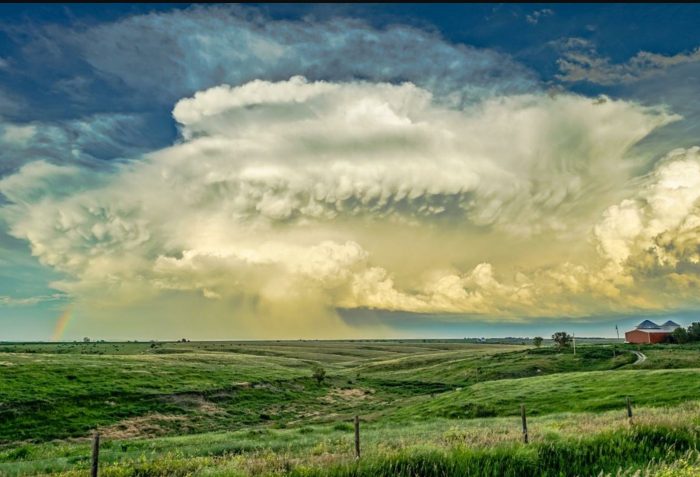
End conversation.
Ah, that word: home. ”Home, home on the range. Where the deer and the antelope play…” It was great reconnecting with Professor Dewey, especially hearing of how he became both a Nebraska Football fan and a Nebraskan in general. Like a home’s fireplace hearth on a winter’s night, he too was drawn to the football flame on a frequent basis. It’s also interesting to learn that of all things Nebraska holds as unique to its region, the weather is not one of them. Rather, it’s more akin to receiving yesterday’s leftovers of others’ regional climates, ending up with the resultant chaos thrown off by the climactic casserole their meetings create, “we are the crossroads for all the other climates passing over us. That creates quite a clash.” I thought this curious, because it’s a perfect analogy to other regions’ athletes gathered together on the Nebraska landscape and creating a ‘team storm’ of their own, which resulted in the Great 60 & 3. It paid to be, as the Professor said, “in the middle of it all.”
Another surprising tidbit was his mention of Nebraska actually ‘toughening up’ a person, especially student-athletes not overly accustomed to the wild swings in the annual weather pattern, “So (the recruits) were not only having a change in culture, but a change in weather and climate.” I’m a firm believer in the notion that Midwest winters impart a greater sense of character, develop a resilience, an endurance, a mental, emotional and even spiritual strength. You can be sure that many a frosh over the years thought more than once about packing the bags for good at first semester’s end and heading home, never to return again to the blasted winter cold and its biting winds as they raged through Lincoln’s campus thoroughfares. Especially at Oldfather Hall, the 12-story Arts & Sciences building towering very near the stadium, whose foyers became at times a vicious, seemingly soul-sucking wind tunnel. I fondly recall sitting in a lower level Algebra classroom and peering out the windows to see a co-ed’s skirt flying up once or twice, and many, many a rainy day’s umbrella demolished by that furious breeze’s force. (Hey, it was cheap entertainment. Ask any meteorology major.)
Notable quote #2:
Ken Dewey on the campus interplay: “In academia there’s a football program here that even academics can be proud of. And there’s an academic program that even a football program can be proud of.”
Copyright @ 2013 Thermopylae Press. All Rights Reserved.
Photo Credits : Unknown Original Sources/Updates Welcomed
Author assumes no responsibility for interviewee errors or misstatements of fact.